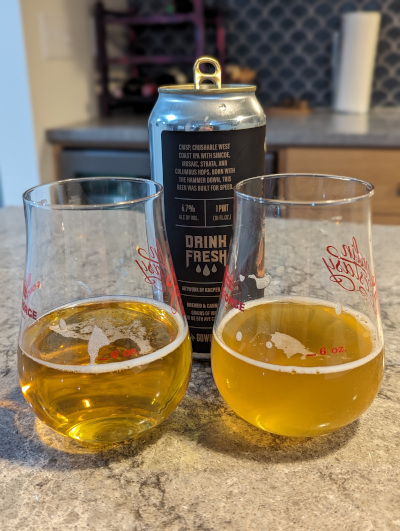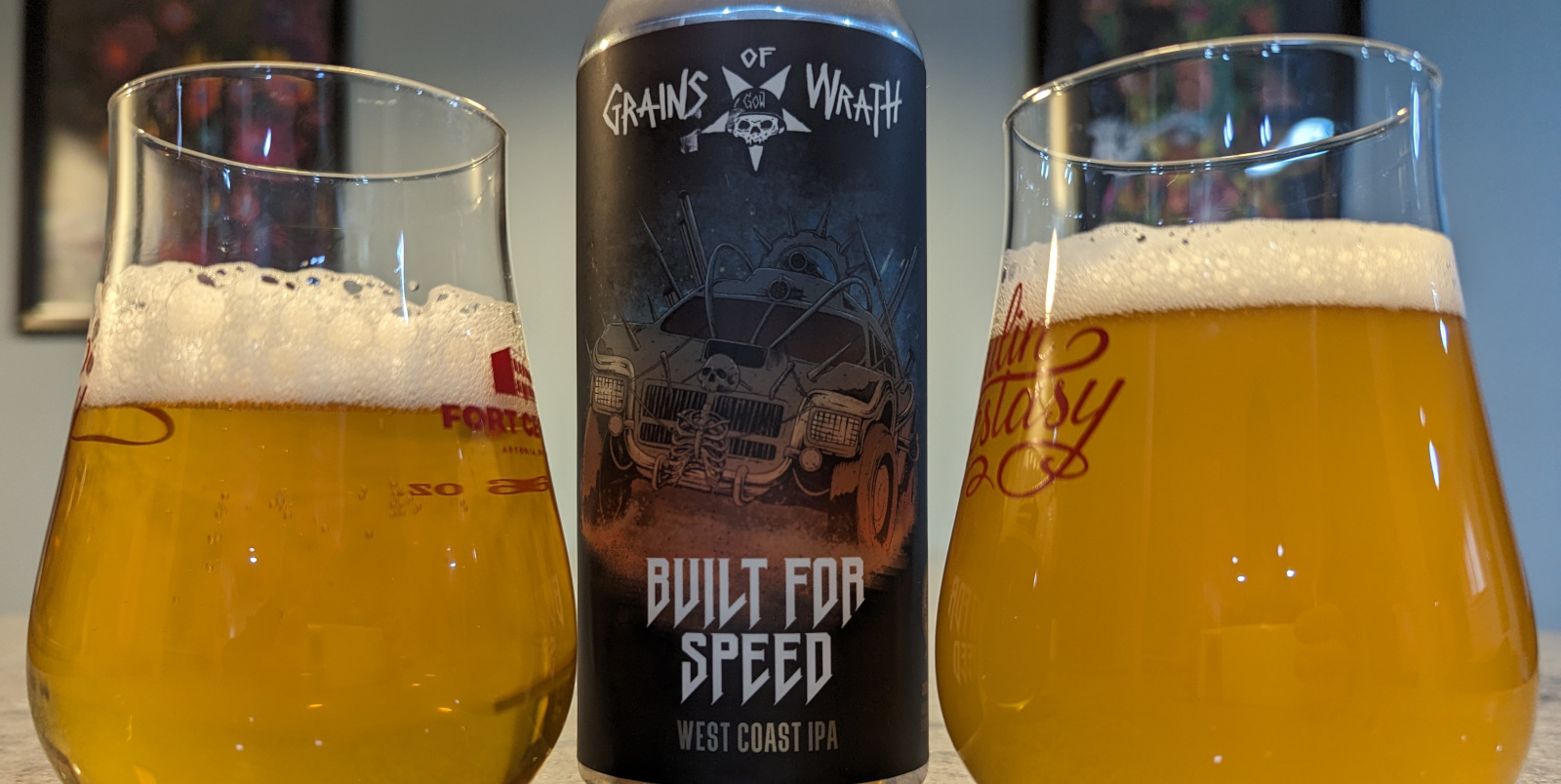This is my 3rd iteration of a clone of Grains of Wrath’s Built for Speed IPA. Below are links to all 3 recipes and the previous 2 side by side comparison posts.
- Built For Me V1 Recipe
- Built For Me V2 Recipe
- Built For Me V3 Recipe
- Built For Speed Clone Side By Side Comparison V1
- Built For Speed Clone Side By Side Comparison V2
Beer description from Grains of Wrath:
Crisp, crushable West Coast IPA with Simcoe, Mosaic, Strata and Columbus hops. Born with the hammer down, this beer was built for speed.
Differences from V2
I’m going to break down the differences into 2 categories since I had a lot of equipment upgrades since the previous iteration. Starting with the recipe:
- Dropped the pale wheat that I had added in V2 and went back to the malt bill of V1.
- Changed mash rest temperature from 152F -> 149F.
- In addition to Mosaic and Simcoe, I also added Columbus and Strata. I also adjusted the hop additions to spread out each hop evenly in the boil and dry hop.
- I used the Hoppy water profile in brewfather which resulted in the additions of some salts to my tap water.
Since my previous batch I’ve made 2 equipment upgrades that may have had some impact on the finished product.
- Switched to an all-in-one electric brew system.
- Switched from an SS Brewtech Bucket for fermenting to a SS Brewtech Unitank 2.0.

Stats
Since I am still getting used to the new electric brewing system, my efficency was much lower than planned. For this system I really need to double mill the grain to get better stats. This resulted in the ABV of the homebrew version coming out to 6.2% vs the commercial version which is 6.7%.
Appearance
The appearance was the biggest difference this time around. I forgot to adjust the dump valve in the up position before cold crashing the beer so it ended up with a bit more haze. Granted it’s still very young, so I imagine it will clear up a bit more while in the keg.
The commercial version is crystal clear and they both produce the same fluffy white head that has good retention. Putting aside the haze of the cloned version, they do have very similar color, being a very pale straw color.
Aroma
Straight from the fridge, the commercial version has a mix of diesel and citrus aromas. The diesel character being more prominent. The homebrew version has similar aromas, but it’s the citrus character that stands out more.
As both beers warmed up, I noticed the differences starting to fade and they became very similar in aroma.
Taste/Mouthfeel
The commercial version has medium (plus) carbonation, while the homebrewed version’s carbonation is a little less bubbly. The commercial version is very crisp and features more of the dank/diesel flavors I picked up in the aroma. The citrus flavor shows up in the finish along with a pleasant bitterness.
The homebrewed version was a little brighter in flavor with more citrus than the dank/diesel flavors. It is also incredibly crisp and refreshing with a pleasant bitterness.
Similar to the aroma, as these beers both warmed up the taste differences became less apparent although not as much as the aroma. The biggest difference is the commercial version was a little more complex with different flavors coming in waves while the homebrewed version’s flavor was more consistent throughout the taste.
Changes for next time
I ended up really liking the cloned version a lot. I think if I had to make changes in order to arrive at a more similar product to the commercial version, I’d probably only modify the hops schedule. I think I’d use a little more Strata as late additions and cut back a little on the Mosaic hops.
Tags: American IPA

